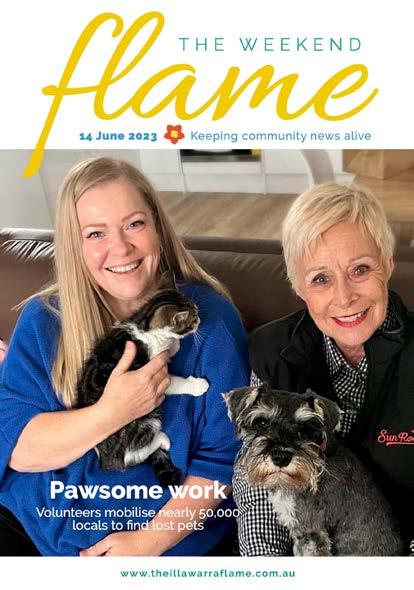
















Explore during the first two weekends in July

The Illawarra Grevillea Park Botanic Gardens will be open on two Saturdays (6th and 13th) and Sundays (7th and 14th) in July.
Come and see the largest display of Australian native plants anywhere in NSW. The expansive native display gardens showcase plants from all over Australia. Enjoy the rainforest and sensory trail and the newly
Call for calm issued
The idea of red bins being picked up fortnightly proved such a hot-button topic that Wollongong City Council yesterday put out a media release to clarify its draft Waste and Resource Recovery Strategy.
Currently on exhibition, the strategy charts a 10-year path and contains various ideas on everything from soft plastics to FOGO. It also mentions ideas to improve waste service efficiency, such as via opt-in fortnightly landfill (red-lid bin) collections. But no decisions have been made.
Council said: “We know some in our community currently need a weekly red-lid bin service. We also know, from audit data, that 30% of red-lid bin contents is organic matter which belongs in the green-lid bin. Others have their household waste
renovated vine forest walk featuring the giant blackbutt.
Shop a huge range of natives including tubestock and special grafted plants. Want advice? Bring your questions and the volunteers will help! Adults $7 Children free; Dogs on leash welcome.
Check out the list of plants for sale at illawarragrevilleapark.com.au
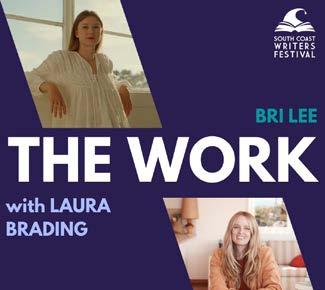
Until July 7 Wollongong Comedy Festival
July 7-14 NAIDOC Week
6-7 July Grevillea Park Open Days
13-14 July South Coast Readers and Writers Festival
14 July Barefoot Bowls Fundraiser
14 July
Illawarra Folk Club Concert
19-20 July Kiama Readers’ Festival
management to a point where they may not need a weekly service. That’s why, as one part of the draft waste strategy, we will look at options for our domestic waste service.”
Have your say at our.wollongong. nsw.gov.au before 23 July 2024.


19-20 July The Listies: Make Some Noise
15-19 July Merrigong Creativity CAmp
26 July
Illawarra Police Charity Ball
Click here for more events
By Jeremy Lasek

“Anh Do’s spectacular portrait of Aboriginal activist Jack Charles was the Archibald’s 2017 People’s Choice winner.”
Theapple doesn’t fall far from the tree – American philosopher and poet Ralph Waldo Emerson is credited with making the first use of this popular saying back in 1839, and it couldn’t be more apt as the Illawarra unveils budding young artist, Leon Do.
Aged 14, Leon is one of four children of Anh and Suzie Do, of the Northern Illawarra.
Anh Do is the well-known Vietnamese-born Australian author, actor, comedian and artist.
His first book, The Happiest Refugee, won numerous awards, including the 2011 Australian Book of the Year, but in 2013 Anh decided to cut back on comedy and writing to focus on his painting.
It was an inspired decision. Anh is a four-time finalist in the prestigious Archibald Prize portraiture competition.
His 2014 painting of his father, 2019 portrait of artist George Gittoes and 2022 picture of musician Peter Garrett all made the final cut. His spectacular portrait of Aboriginal activist Jack Charles was the Archibald’s 2017 People’s Choice winner.
Anh’s brilliant work with oils and his infectious personality gave rise to the hugely popular ABC TV series Anh’s Brush With Fame, in which he concurrently interviews and paints a
portrait of his guests, all prominent Australians.
Enter young Leon Do, who looks set to follow in his famous dad’s footsteps, having been selected as a finalist in the Young Archie’s, the junior extension of the famous Archibald’s. The Young Archie’s competition provides an excellent platform for talented young people to create moving and thoughtprovoking art.
Leon, a Year Nine student at TIGS, decided to enter a portrait of his brother, titled Xavier on a Tuesday.
“My painting captures my older brother Xavier on a Tuesday morning,” Leon said in his exhibition statement.
“Sometimes Xavier is up, some times he’s down; on this day he was in the middle. In my painting I have attempted to portray my brother’s slightly melancholy mood. I have chosen to paint my brother because he is always there for me no matter what. I love painting with oils and enjoy learning from my dad, the artist Anh Do.
“I also like to learn by studying the works of artists like Vincent Van Gogh and Lucien Freud.”
While we watch and wait to see what the much-loved Anh Do will do next, there’s equal excitement about what’s to come from the same household and the talented teenager, Leon.

Detail of Xavier on a Tuesday

By Tyneesha Williams

Thisschool holidays, The Listies are bringing their latest show, Make Some Noise!, to Wollongong’s Illawarra Performing Arts Centre (IPAC) from July 19-20.
The comedy duo invites audiences aged “4 to 400 million – dinosaurs allowed” to enjoy a performance full of songs and silliness.
“We aim to make humans of all ages laugh, as many times as possible in 55 minutes,” says the Listies’ Richard Higgins.
Richard and his co-star, Matthew Kelly, have been entertaining children and adults for more than a decade.
Known for their appearances on ABC Kids’ The Listies Work For Peanuts and Art Blast, the duo has built a
reputation for their brand of familyfriendly comedy.
“We started out doing adult comedy in about 2008, back in the dinosaur times,” says Richard.
“There are a lot of kids shows out there that have an educational aim or they’re a bit whimsical, about the magic of childhood, which is wonderful and great, but Matt and I are clowns.
“That’s what we’re about – just making pure live entertainment which is increasingly rare in this world.”
The duo’s approach to children’s comedy is fast-paced, with a new idea presented every five minutes to keep children engaged and entertained.
“I think a good kids show should be dynamic. It should have a lot of ideas in
it. It shouldn’t have any less ideas than an adult show,” says Richard.
“There should be a new toy, a new reveal, a new piece of music, a dance – it should change every five minutes. It probably should change every three minutes, with attention spans.”
Richard and Matthew create comedy for kids by thinking back to what they found funny in childhood and creating a situation or game that kids can recognise and relate to straight away.
“I’ve learnt how to make comedy that doesn’t have references to contemporary politics or drugs and alcohol,” says Richard.
“A lot of stories done by comedians are about dating or love life, their husband or their partner or something crazy that happened to them on a crazy night.
“We try to start with the premise of ‘what do kids know?’ So our last show was about bedtime. This show is about music, because kids love music.”
Live comedy shows for kids offer an increasingly rare alternative to screen-based entertainment.
“Seeing something live, and being in an audience of people, not a virtual audience, an actual audience with other bodies, looking at things and laughing together is a very human and a very old ancient experience,” Richard says.
“But I also think it’s important that Matt and I are grown men and we’re being silly.
“We’re not being tough and brave and strong, we’re being silly and scared and anxious and emotional. We’re getting upset and then making up, and I think that alternative masculinity is important for kids to see.”
The Listies have won Best Kids Show at the 2023 Melbourne Fringe Festival, a Sydney Theatre Award and Best Independent show (Golden Gibbo Award) at Melbourne International Comedy Festival. They’ve also published books with Penguin and recorded four albums.
Now they’re looking forward to bringing Make Some Noise! to Wollongong audiences.
“We’ve been to Wollongong maybe six times, this is maybe our seventh time,” Richard says.
“We know all the staff there. Simon [Hinton] who books us at Merrigong, he’s amazing. It’s a great theatre and they have a great audience,
“So it’s a little bit like coming home sometimes, going to places like Wollongong.”
Performances at IPAC on Friday, July 19 at 6pm and Saturday, July 20 at 10am (a relaxed performance) and 1pm.
The show runs for 60 minutes without an interval and is suitable for ages four and up.
Tickets are $29, with a $6.95 transaction fee for phone and online bookings.

“We aim to make humans of all ages laugh, as many times as possible in 55 minutes”
– Richard Higgins, of The Listies
By Tyneesha Williams

Coming up on July 13 and 14, 2024’s South Coast Readers and Writers Festival is set to bring together all kinds of book lovers in Thirroul.
Dr Sarah Nicholson, director of the South Coast Writers Centre, says attendees will enjoy a change of scenery after last year’s festival, which was held in Wollongong.
“It’s more integrated with the Thirroul cafe scene. You can wander out and have a nice coffee and come back,” Sarah says.
Also new this year is the word “readers” in the event title, making the festival more inclusive and welcoming to a broader audience.
“Some people had expressed that they didn’t feel welcomed by the idea of a writers festival if they weren’t writers,”
Sarah says. “We wanted to make it clear that this is actually mostly a festival for readers.”
The South Coast Readers and Writers Festival will feature a diverse range of genres, including crime, historical fiction, poetry and non-fiction journalism, with author talks and panel discussions over the festival weekend. The festival aims to connect the local literary community, with about 60 percent of featured writers being South Coast residents.
“A lot of the time people won’t realise how many local writers we have, and some of them are debut writers, but some of them are really well-established award-winning writers,” Sarah says.
“At the writer’s centre, we try to

“The best way to support writers is to come to their events and to buy their books and then to go out and talk about their work.”
– Sarah Nicholson
connect people and make spaces for people to come together in groups and support each other in writing by having mentoring programs and residences. And what we’re trying to do with the festival is make these spaces to promote our local writers, so that people get to know them.”
Notable speakers include writer Bri Lee, whose debut novel The Work was released in April, and Antony Lowenstein, an investigative journalist who won the 2023 Walkley Book Award for his exposé The Palestine Laboratory.
“He is a really fantastic speaker,” Sarah said about Antony. “I’m really excited to have him coming. The topic that he’s talking about is what’s happening in Palestine. It’s massively current and important to be discussing.”
The festival will host a session on modern fairy tales, featuring local debut novelist Kell Woods, whose book, After the Forest, is a modern retelling of Hansel and Gretel. The event will also feature Parramatta author Yumna Kassab, the inaugural Parramatta Laureate in Literature, who will discuss her book, Politica, on a War Fiction panel on Saturday 13th.
A showcase of women poets promises to be a festival highlight, with Kirli Saunders, Anne-Marie Te Whiu and Judi Morison leading Yarning Poetry at 10.20am on the Saturday.
Sarah is excited to welcome writer Catherine McKinnon, a University of Wollongong lecturer with a new book
titled To Sing of War. “I’ve heard it’s fantastic,” Sarah says.
“Her previous book, Storyland, was set down on the South Coast in three or four different time periods. One of them in the future and then with the first European explorers who found the South Coast.”
The festival has partnered with several organisations, including the University of Wollongong’s creative writing department; Red Room Poetry, who are helping with the poetry showcase; Collins Booksellers Thirroul; and Wollongong City Libraries. The festival has also received funding from Create NSW and volunteers will play an important part in making it an incredible weekend for local look lovers.
“Supporting literature is talking about the books you’re reading and passing them along,” Sarah says.
“The best way to support writers is to come to their events and to buy their books and then to go out and talk about their work.”
Sarah says locals looking to get involved in the literary scene can join a number of book clubs in the area.
“Collins Booksellers have a book club at Coledale RSL called Pages and Pints, and Wild Women of Wollongong have a bunch of book clubs that they run.
“Maybe for next year, we might have a book club that comes to the festival so that people can do some pre-reading or even post-reading. I think having a club connected to the festival would be great.”

By Emma Rooksby of Growing Illawarra Natives
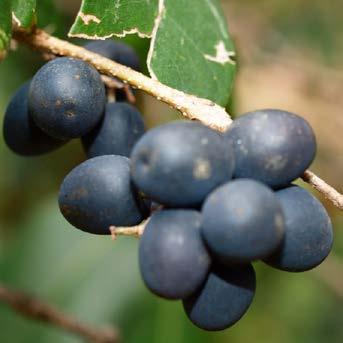
“It does provide
absolutely outstanding habitat, via its spreading and shady branches, and due to the juicy, edible fruit.”
– Emma Rooksby
Oneof our smallest and cutest local trees is simultaneously in flower and fruit right now. The Mock Olive, scientific name Notelaea venosa, has been flowering and fruiting almost continuously over the last 18 months, due to the extraordinary sequence of wet years. One of many local tree species that have benefited from the wet conditions, it’s done extraordinarily well.
I’m not sure how to do the Native Mock Olive justice.
It’s just not that showy. But it does provide absolutely outstanding habitat, via its spreading and shady branches, and due to the juicy, edible fruit.
Pictured below is a well-grown Mock Olive showing its low but spreading canopy. (Image by Byron CawthorneMacGregor.) This an advanced specimen that’s doing extremely well.
If you haven’t previously made the Mock Olive’s acquaintance, now is the time to do so.
This tiny and resilient tree could cope in almost any garden situation, and its spreading habit and extensive root system will allow rainfall to infiltrate the soil, reducing the challenges of flooding downstream. It deserves protection so it has the chance to thrive and reproduce.
Pictured at left is the fruit of the awesome Native Mock-olive, striking jet-black and midnight blues in coordination. (Image by Byron Cawthorne-MacGregor.)
Are you one of the lucky people who have a Mock Olive in your garden or in your local Bushcare or Landcare area? Keep an eye out to see just how regularly it is in flower and fruit.


FOR SALE: Check out the list of plants for sale at illawarragrevilleapark.com.au

Saturday July 6th and 13th; Sunday July 7th and 14th 10am to 4pm
Come and see one of the largest displays of Australian Native Plants anywhere in NSW. The expansive native display gardens showcase plants from all over Australia Enjoy the rainforest and sensory trail and the newly renovated vine forest walk featuring the giant blackbutt Want advice? – bring your questions and we will do our best to help!

By Genevieve Swart

Afternine years as principal, Friday will be Bec Stone’s last day at Otford Public School and there are two things she will really miss in retirement.
“The kids and the environment,” she said. “The thing about a small school – we always use the tagline, ‘small school, big heart’ – the kids are so well known.
The connection of being in a small tribe means that we can stay on top of what their needs are, what their potential is and encourage them, and challenge them to be the best that they can be.”
Otford has just two classes – Kindy to Year 2 and Years 3 to 6 – and a total of 42 children.
“We tend to get a lot of kids who come from other local schools that need the environment of the small school for that kind of support,” Bec said.
Bec took an unusual path, only
coming to teaching at age 35. She originally studied a Bachelor of Science at Macquarie Uni then worked in a variety of jobs, including as a Qantas flight attendant, a travel agent and at a pharmaceutical company.
“I’ve done lots of different things,” she said. “When my son started school, I used to help out in the classroom just as a parent helper. And I just thought, ‘Wow, this is the coolest.’
“I worked with a particular boy for about six months, just doing Buddy Reading, and seeing the success and changes in his abilities was fascinating.”
It reawakened her interest in biological psychology, in learning about senses and brain development.
“So I worked part-time and did a two-year degree in one year. It was the best thing I ever did, I always said

“We’ve been a STEM-based school and we’ve been really at the forefront of future-focused learning”
– Bec Stone
teaching was the culmination of apprenticeship of lots of different jobs that I’d had prior.”
Bec worked at schools across the Illawarra, including at Coledale, Bulli and Bellambi (“I loved, loved being there…more so in a low-socioeconomic school, you’re given a chance to really help”).
In 2016, she started at Otford, on the same day as school administrative manager Nicole Kludass.
“I hadn’t been a principal and she hadn’t been a school admin. We started together and had a great nine years,”
Bec said.
“I love designing curriculum. I love looking at ways to put units of work together that are really engaging for the kids. And being a teaching principal gives you that opportunity. Not only do you get to lead others and share professional learning with others, but you still get really involved at the class level, in teaching with the kids. So for me, that’s the reason I stayed nine years.”
Not long after the pandemic began in 2020, a parent who was an epidemiologist warned Bec we would be in and out of lockdown for years. This prompted her to start on her third degree: a Master of Education in STEM.
Today, after 25 years in teaching, Bec is proud to have shared her love of science, technology, engineering and maths with students and other teachers.
In recognition of this passion, Wednesday, July 3 was ‘Dress Up like Mrs Stone Day’ at Otford Public School and Bec had a “lovely surprise” when children arrived in various guises, including astronauts, a paleontologist and a dinosaur, some mad scientists and mathematicians, Mrs Fixit and a bushfire brigade captain.
“We’ve been a STEM-based school and we’ve been really at the forefront of future-focused learning,” Bec said.
“Last year we were part of a Mars in Space program with the Andy Hargreaves Foundation and the Australian Space Academy. There were about 1200 [schools] that applied for it and we were one of 30 across Australia that were chosen.
“We worked really closely with other people in the community because we were designing an agriculture biodome on Mars using 3D printing.”
This included lessons on growing plants at Gilly’s Kitchen Garden across the road from the school.
“The kids designed things like Space Rovers, which would travel up and down indoor vertical gardens. The P&C helped us by buying an aeroponics kit, so we were growing plants in air.
“So you use lots of different little projects to then design this final biodome, and the kids went to Sydney to an expo and they ran the whole thing.”
Read more here
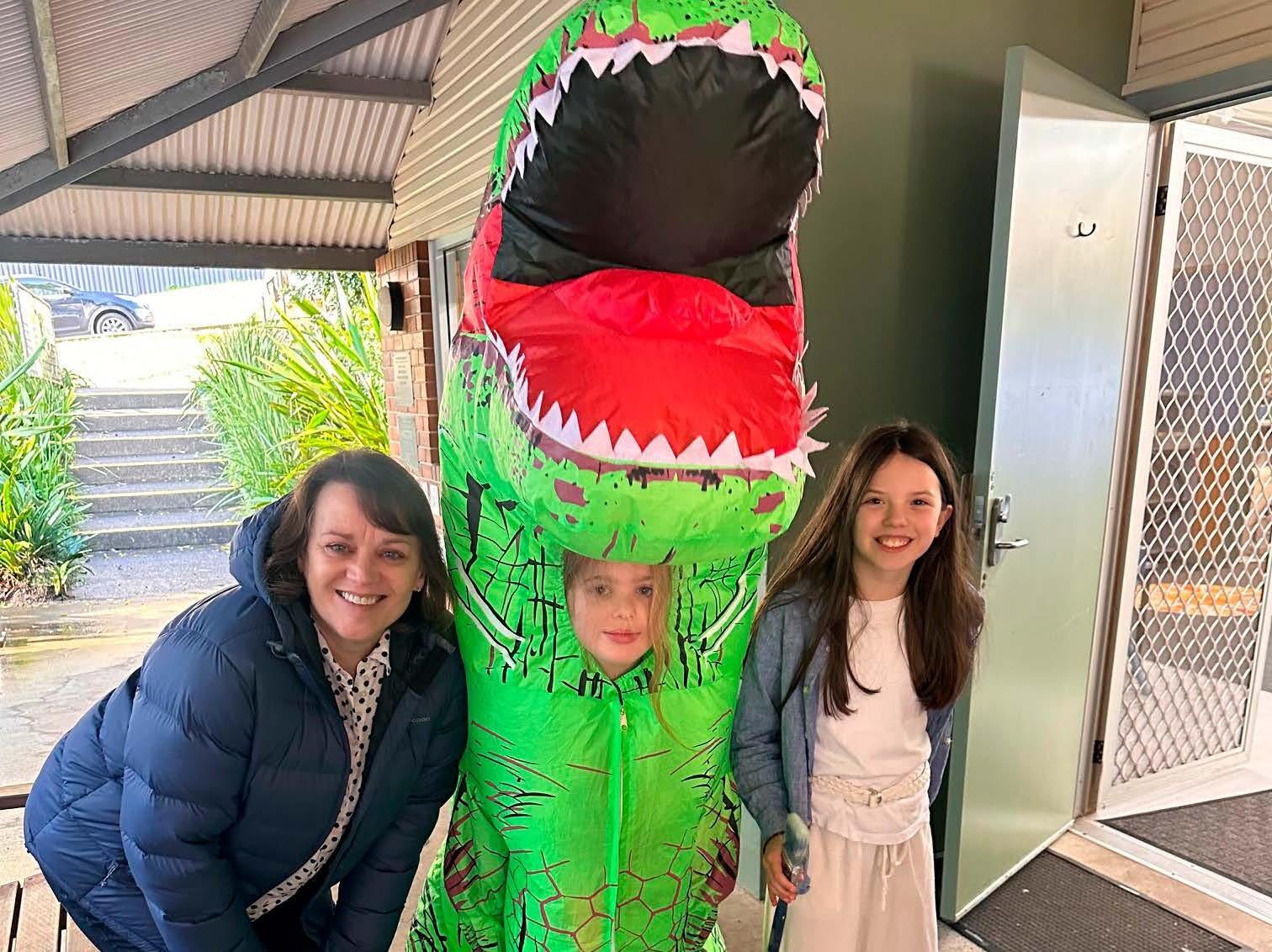

By Jeremy Lasek
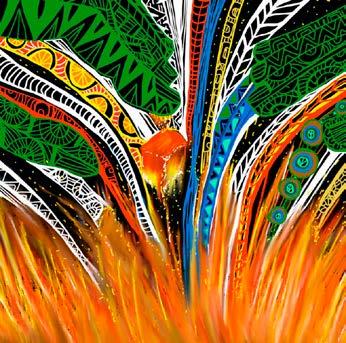
“This theme calls for a reclamation of narratives, an amplification of voices, and an unwavering commitment to justice and equality”
The 2024 NAIDOC Week theme is ‘Keep the Fire Burning! Black, Loud and Proud’ and there’s plenty happening across the region to celebrate this year. This theme calls for a reclamation of narratives, an amplification of voices, and an unwavering commitment to justice and equality.
NAIDOC stands for National Aborigines and Islanders Day Observance Committee. Its origins can be traced to the emergence of Aboriginal groups in the 1920s which sought to increase awareness in the wider community of the status and treatment of Aboriginal and Torres Strait Islander Australians. While NAIDOC Week may be a celebration of our First Nations people, history and culture, since it became a week-long event back in 1975, everyone is encouraged to take part in the host of events that start this week.
What’s on
Saturday 6 July: Coomaditchie NAIDOC Exhibition. Starts at 11am at the Servo Food Truck at 6-8 Wentworth Street, Port Kembla. Includes a smoking ceremony, food trucks, a free BBQ and great local Indigenous art. The exhibition will be on display from 6-14 July.
Monday 8 July: Shelharbour NAIDOC Community Day, from 11am-2pm at
Shellharbour Civic Centre.
Tuesday 9 July: Warrawong NAIDOC 10th anniversary Family Fun Day from 10am-1pm at Darcy Wentworth Park, Carlotta Crescent, Warrawong. The event will include a free St George Illawarra Dragons football clinic.
Thurs 11 July: Koonawarra NAIDOC Family Fun Day from 10am-2pm at the Koonawarra Community Centre, Fowlers Road, Koonawarra. The event will include cultural workshops, performances, stalls, live music, prizes and giveaways and a free BBQ.
Friday 12 July: Dapto NAIDOC Week Community Event from 10am-12pm at Dapto Railway Station. This event will include a Welcome to Country, Smoking Ceremony, traditional dancing, didgeridoo performance, kids’ activities, a coffee truck and sweet and savoury treats using Indigenous ingredients.
Wednesday 17 July: Bellambi NAIDOC After Party from 10am-1pm at Bellambi Surf Club. Everyone’s invited to join the celebration which includes dance, song and live music. There will also be boomerang throwing workshops, an Elders Tent, a sausage sizzle and delicious soups to sample.
Sat 20 July: Sandon Point NAIDOC Week Family Event, 10am-4pm at the Sandon Point car parking area, includes a smoking ceremony, live music and BBQ.

Are mumpreneurs the canary in the coalmine?
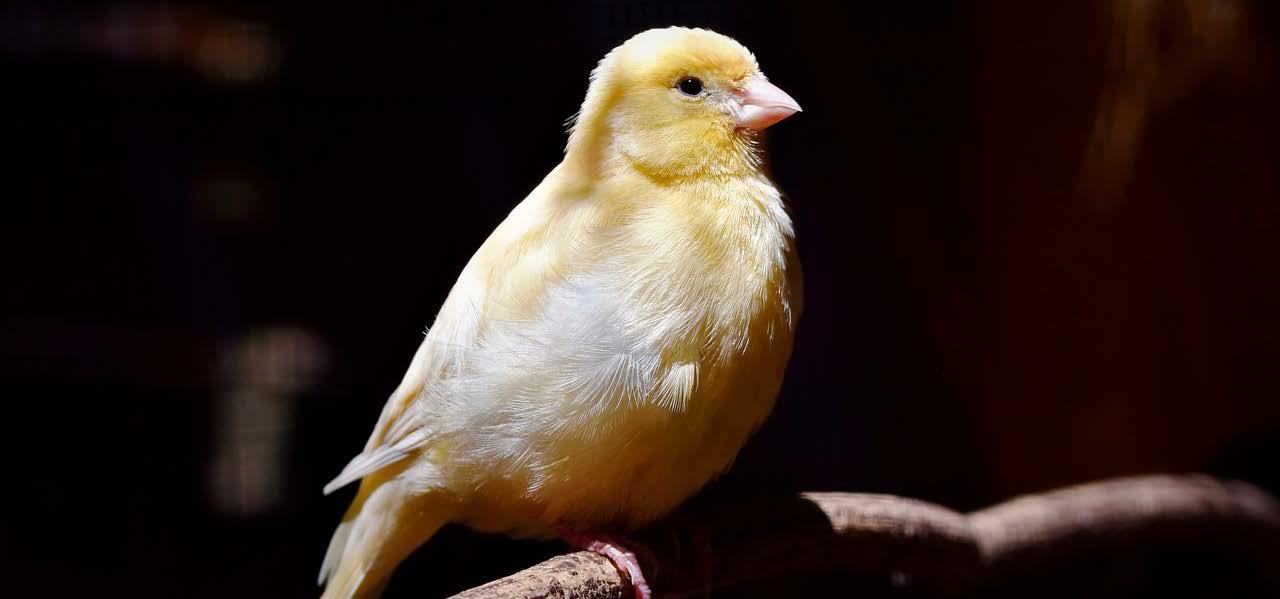
By Andy Lawrence

“Our current workforce is woefully illequipped to support and retain mothers.”
– Andy Lawrence
Since becoming a mother four years ago, I have noticed something within the echo chamber of my social media channels. Instagram, in particular, has become rife with alluring content all designed to sell me the solution to my problem.
My problem?
Having two tiny full-time dependents, minimal capacity and maximal financial insufficiency.
Their solution?
Start a business. Be your own boss. Gain flexibility to work and ignite your creativity and passion around the constraints of mothering small children. This comes in several forms from the frankly nefarious MLMs (multi-level marketing) to small heart-centred, passion-led businesses.
But why not just return to a salaried job?
Well, I don’t think the solution is that easy for many, many women and families.
Back when I was working as a research scientist, I had a full-time job in Sydney at a company who prided themselves on their diverse workforce. Equality was an important company value and they loved to celebrate women in science by hiring and promoting women in addition to the perfunctory cupcakes on International Women’s Day.
They seemed to walk the talk, at least more than most.
So, imagine my surprise when I fell pregnant and found out that there was no paid maternity leave policy. At the time, I didn’t even know that was legal. I now know that companies are required to provide 12 months of maternity leave but are not required to pay a cent. I kicked up a stink and received a measly two weeks’ paid leave. After nine years of university, a PhD and a long list of published research, I was more than a little affronted at what that effort amounted to the moment I stepped into motherhood.
By this stage, I had moved to Wollongong and was alternating between commuting and working from home, prompted by the first wave of Covid. Months after my daughter was born and I began conversations about returning to work with my team, I found that I would be unable to return in the capacity I held before I was a mother. At 12 months old, my daughter was still breastfeeding multiple times a day and commuting to Sydney was no longer an option. The role I was offered was full time and on-site or nothing.
It should be noted that I willingly resigned from that job, knowing that my career was headed in a different direction and no longer fit with my passion or
values. But the story does highlight a very common phenomenon that women who become mothers inevitably face.
Every single mother I know has made a decision that does not sit well in her body, one that does not align with her values to be able to fit within the mould of what it means to be a working mother in our society.
Whether it’s ending breastfeeding early, or not beginning at all. Whether it’s training a baby to sleep on a schedule that suits the workday or putting a baby in childcare long before the separation feels right.
I believe that so many women turn to self-entrepreneurship as a way to deal with the fact that our current workforce is woefully ill-equipped to support and retain mothers.
Not only that, mothers are seen as a liability due to their duty to their dependents. Their increased capacity for empathy and compassion and therefore leadership is not acknowledged or capitalised upon.
After living in the quicksand bog that is motherhood, our ability to zoom out and contextualise problems and get shit done in record time is second to none.
We are intimately acquainted with the feeling of constantly running, only to find ourselves in the same place, still sinking in the mire of endless domestic and emotional labour. Thus, our sense of
perspective and ability to discern the significance of a problem, then solve it, is greatly improved by our experience of motherhood.
For many women, work becomes a refuge, a way to nurture the person we are beyond our role as mother. It can be a place that we relish and in which we could flourish with support and adaptation.
In the face of so little validation for our talents and gifts and for the constraints that hobble us, it’s no wonder women are regaining their power by turning their backs on traditional salaried jobs and jumping into entrepreneurship.
Perhaps mumpreneurs are the canaries in the coal mine.
They warn us of the increasingly toxic air we breathe as we continue to participate in a work-model whose growth was seeded in the Industrial Revolution and that holds little relevance 200 years later. Not to mention how that model directly contradicts human physiology.
Perhaps mumpreneurs would have something to say about how we can integrate career and family in our modern society without making ourselves sick. And perhaps we could listen and enact change before the canaries become the sacrificial lambs offered on the altar of social change.
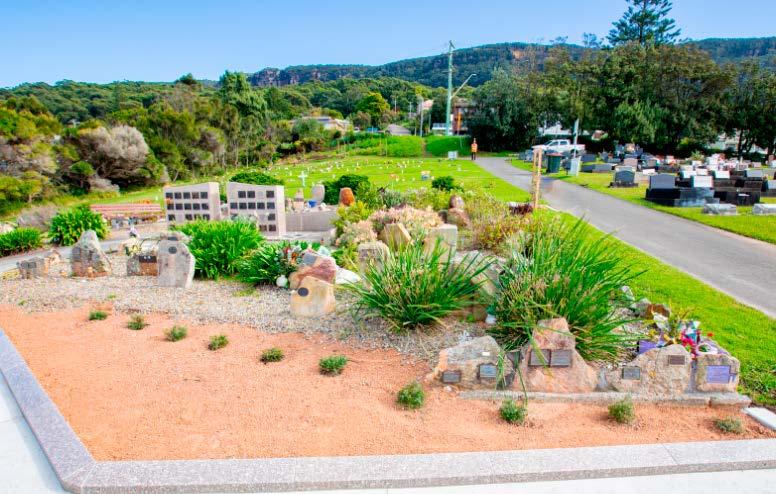

Whether you’d like to say hello to some scaly or feathery Australian wildlife, learn the basics of animation, make a robot out of recycled materials, or turn your pet into Pop Art, there’s loads to do these school holidays.
Click here for Wollongong City Council’s list of activities
Wollongong City Council is holding two sale days
With work on the new ash walls and gardens at the Scarborough Cemetery nearing completion, community members are invited to check out the new memorial sites.
In May 2024, Council undertook an extensive construction project to increase memorial space at the cemetery. There are now up to 480 new ash memorial spaces available.
“Already, we’ve received interest from our community who have held onto their loved one’s ashes in hopes of memorialising them at Scarborough Cemetery. In response to this interest, we’re hosting two pop up sale days at the cemetery,” said Lord Mayor Gordon Bradbery.
Sale days: Saturday 6 July, 9-11am and Saturday 20 July, 9-11am
By Genevieve Swart

“Solar power reduces our carbon footprint and reduces our bills.”
“There’s lots of bad dad jokes in this, but it’s a shifting of the power balance –consumers are taking control of their own energy supply.”
– Ty Christopher, Energy Futures Network Director
Australians love rooftop solar.
“We invented the technology, we’re the biggest users of the technology,” said Ty Christopher, Director of the Energy Futures Network at the University of Wollongong.
“Australia is leading the world with the uptake of solar on homes and businesses.”
At a local level, volunteer organisation Electrify 2515 has hosted packed ‘town hall’ talks in Thirroul, held an EV & E-bike Open Day and launched a discounted solar rollout program as part of its bid to become Australia’s first electric community.
Driving the growing demand for solar is people’s desire to cut costs and save
Rachel, next to the tank that forms part of her home’s heat pump. Also pictured is Toby, who is pretty excited by anything that keeps him cosy!
money, as well as switch to renewable energy and combat climate change. It’s an empowering situation for ordinary Australians, Ty said.
“There’s lots of bad dad jokes in this, but it’s a shifting of the power balance –consumers are taking control of their own energy supply.”
We spoke to two locals who’ve done just that.
Donna’s six years of solar Driven by a desire to reduce her carbon footprint, Illawarra local Donna bought a hybrid car and spent $20,000 on a 6.5kW rooftop solar system when her home was built six years ago.
“I just decided that I would try and do
what I could for the environment, so I asked the builder to arrange to have solar panels and a battery in the build process,” Donna said.
A grandmother who is now retired and at home during the day to enjoy the full benefits of solar power, she said: “The solar panels do work really well – when it’s sunny.
“I have to be honest that I am now onto my third battery because the first battery failed within the first year. Then my second battery was recalled last year. So it was very disappointing for me because those two batteries have just gone into landfill. But I have to say that the system works well.
“If we’ve had a sunny day, I’ve probably exported 10 kilowatt-hours (kWh) to the grid. My battery’s full, and then my battery will usually last until the next morning. Then if it’s sunny, it will do the same thing over and over again.
“But if it’s cloudy, then that doesn’t happen. I import from the grid all day.”
To begin with, Donna found her account in credit but monthly electricity bills have been rising and last month she received her biggest bill so far. Donna worries about electricity prices going up and also what will happen when householders have to pay to export to the grid.
In the latest Electrify 2515 report, the group’s coordinator, Kristen McDonald, explains how the Australian Energy Regulator recently introduced a new pricing structure for electricity distributors, including our local Endeavour Energy.
A key change will be that, during peak sunshine time, from 10am to 2pm, only 2kW of solar can be exported to the grid for free; any more will be charged. Endeavour’s changes will be phased in and apply to everyone from 2029.
Of the changes – which some media have labelled “a sun tax” – Donna said: “I believe this is not very fair and not in the interest of people putting solar panels on their roof, because if you are going to have to pay to export your solar to the grid during the day, then what’s the point?”
Ultimately she recommends panels (“although I would think twice about having batteries”) and would prefer a future powered by the sun rather than offshore wind. “I feel really fortunate to live here and see what happens in the ocean and I just can’t see that it won’t be affected by floating wind turbines,” Donna said. “I think that they need to look at other options.”
New to solar and loving it
Northern Illawarra resident Rachel and her family are pleased about their solar system installed in January.
“We wanted to install solar as soon as we moved to the northern Illawarra,” Rachel said. “We were motivated by a trifecta of benefits – to protect the environment, support the local economy, and reduce our household budget.”
Rachel got quotes from reputable local businesses using Electrify2515’s community solar rollout. They chose a 6.6kw system for their three-bedroom house. They saved for the upfront cost, spending less on a second-hand car as a result, and chose an accredited installer to obtain a federal government subsidy.
“There are some great tradies and small businesses who are part of the growing local renewable energy sector,” she said. “They were fast to respond to our enquiries and happy to inspect our house to see what would best meet our needs.”
After five months, they are already seeing the environmental and economic benefits of solar.
“Solar power reduces our carbon footprint and reduces our bills at the same time,” Rachel said. Her family’s first quarterly electricity bill after installation was less per day than the daily supply charge. While they don’t have a home battery, they time many of their appliances, such as their heat pump, to run off solar during the day.
“Every little bit counts to manage cost of living pressures,” she said.
With rooftop solar generating more than 10% of Australia’s electricity, it seems many other households feel the same.
Click to read the full story on the Flame’s website
By Amanda De George
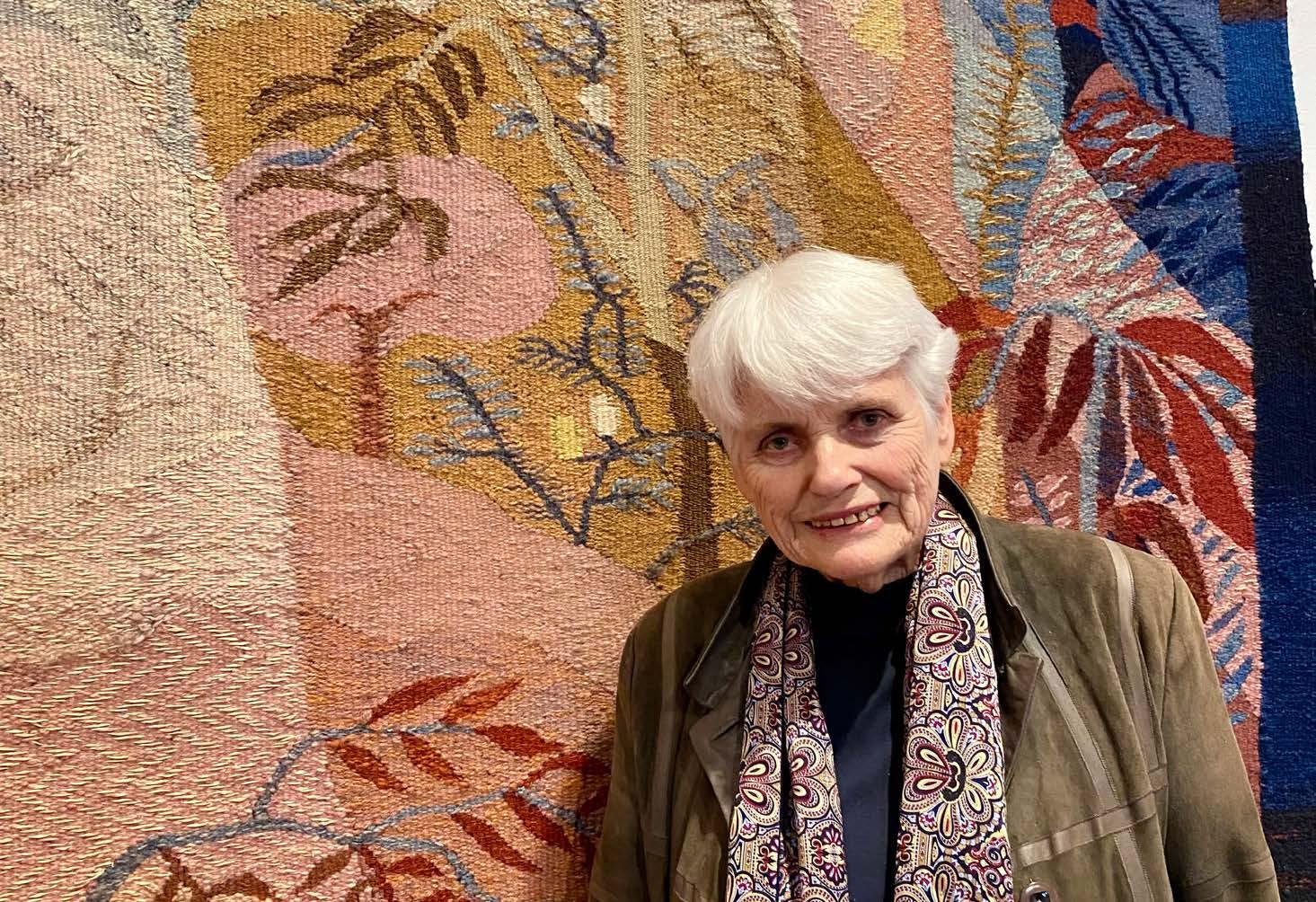
WhenI ask artist Diana Wood Conroy to tell me about herself, she pauses for some time. How do you put into words a lifetime of artistic practice, of academia, a love of painting and tapestry and archaeology, working on dig sites and in world-famous museums, of motherhood, of a house in the wild subtropical forests of northern New South Wales, of teaching and writing and of loss?
What’s on at Wollongong Art Gallery
We are sitting in the Wollongong Art Gallery surrounded by some of her tapestries and paintings drawn from private and public collections from around the world. Decades of work are represented here. Thousands upon thousands of hours behind the loom, sometimes high atop scaffolding to create pieces enormous in scale and, above us on the balcony, dozens of small watercolours, a daily ritual, marking time, small scenes as viewed from her bedroom window. She begins, “By the time you’re 80
years old, there’s quite a lot to tell.”
Two moments stand out to me as integral to getting us here, surrounded by the works of her current exhibition, Diana Wood Conroy: An Archaeology of Woven Tapestry, and they both involve museums.
During a family trip to England, Diana – already fascinated with archaeology but with no means to afford a trip to Cairo and the museum she was so desperate to see – took matters into her own hands.
“I was 15 years old, so I set myself to winning the Ladies Deck Quoits Championships, which enabled me to get five pounds so that I could afford to go,” she said. “After that [trip to the Cairo Museum] I was hooked.”
Diana went on to obtain a degree with honours in archaeology and this, along with her life-long talent for drawing, saw her move to Europe and work as an archeological illustrator. “All archaeological objects have to be drawn
as well as photographed,” Diana explained.
“While I was working at the British Museum in one of my illustrator jobs… they said ‘Diana, just go and sort that cupboard”.
“So I went and sorted the cupboard and found boxes that had been sent from Egypt in the 1950s and never opened,” she said. “And they were full of little Coptic tapestries. They were brilliantly coloured. Animals and plants, and so I found somewhere to teach me to weave. Never looked back.”
And it turns out archaeology and tapestry have much in common. Diana said, “Archaeology is based on a grid. You grid up the site, plan it and then stratigraphically you go down and plan the sides of the trenches… In a sense, it is quite like weaving, which is also based on a grid; vertical, horizontal, and measurement, extremely fine measurement.”
The tapestries in this exhibition – some commissions from her time working with architects Noel Bell and Ridley Smith, others from private collections around the country – took three years to find, gather together and restore.
They speak to the changes in her life. When she was living in the then wild forests of Bellingen with her husband, Joseph, her tapestries were filled with foliage and birds and she says, “I saw my identity in the nature around.” Later works contain elements of the Illawarra environment, such as coal wash, after
moving to the Illawarra in the 1990s to work as an artist in residence at the University of Wollongong.
The enormous tapestries of the 70s and 80s give way to pieces combining illustrations with smaller sections of weaving.
“I started then to weave fragments, and this was a way I could combine drawing, and weaving wasn’t quite so time-consuming and it was also fresh and exciting,” Diana said.
“I liked the fact that it was fragmented because it made you realise what was lost and I felt that I’d lost a lot by coming to Wollongong, even though it was an exciting new world. I’d lost my little house in the forest and I loved my forest so I suppose I took on the ancient loss as sort of metaphor for loss generally.”
There are smaller tapestries still, exhibited as part of Plant Stories: Woven Tapestry Narratives, a group exhibition held last year in the Australian National Botanic Gardens.
Diana says, “I said in the catalogue after I made them I thought, ‘Oh, they look awfully like the Bellingen ones.’ It’s a circle.”
The daily watercolours, depicting a moment in each day, are most often painted from her bedroom. And perhaps it is a circle. The loss of Diana’s forest home that she so loved is replaced now with the Illawarra’s looming escarpment and sparkling coastline.
“I love the mountains and the sea of the Illawarra,” Diana says. “It’s very much home now.”
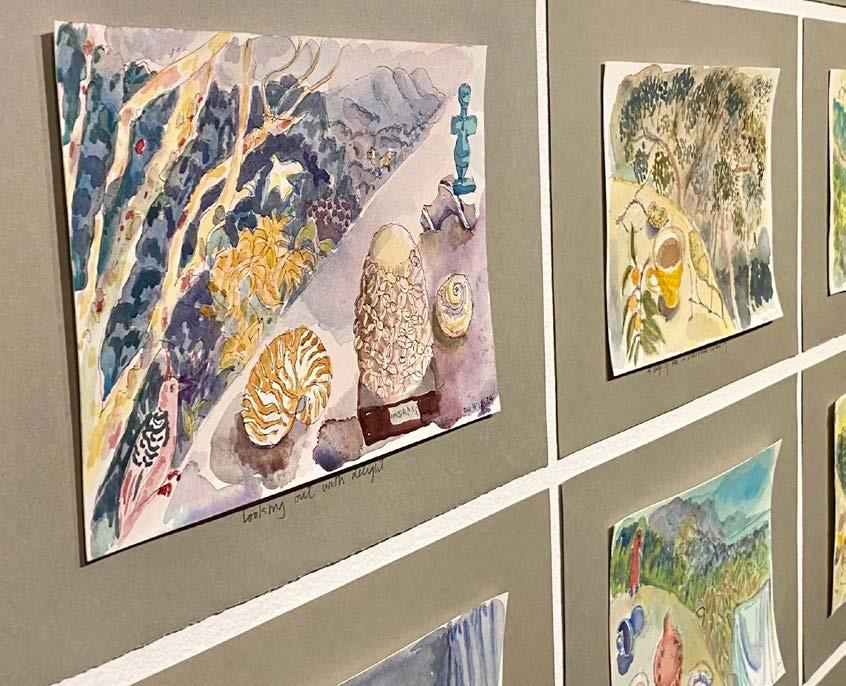
“Archaeology is based on a grid. You grid up the site, plan it and then stratigraphically you go down and plan the sides of the trenches… In a sense, it is quite like weaving.”
–
artist Diana Wood Conroy
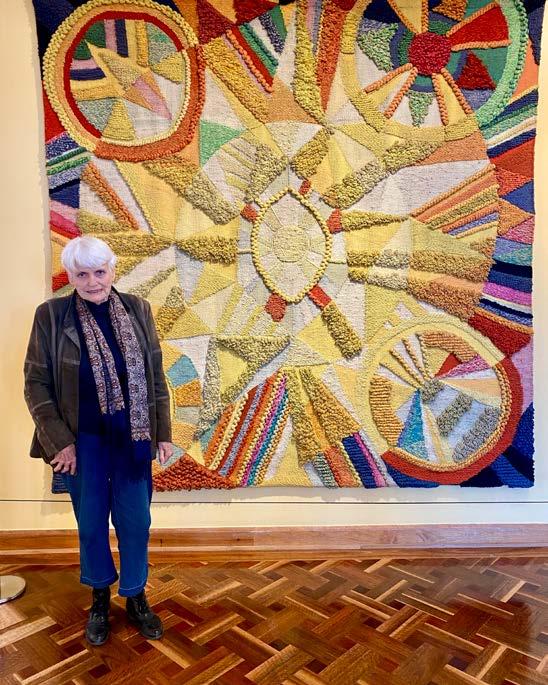
Support independent local news for $5 a month and you’ll receive the Weekend Flame + access to all our interactive digital puzzles
